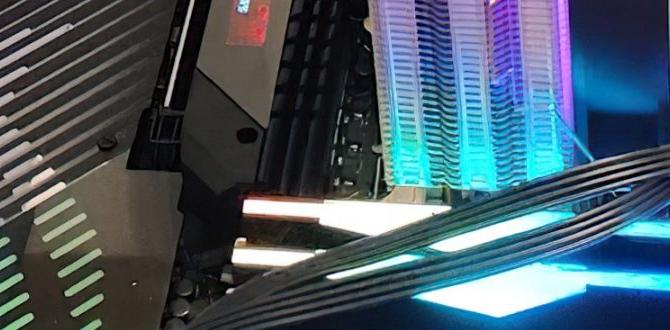When it comes to building the ultimate gaming PC, the motherboard plays a crucial role in ensuring compatibility and performance. The ASUS Maximus Extreme is a high-end motherboard known for its robust features and reliability. In this guide, I will walk you through the process of setting up the ASUS Maximus Extreme for the best gaming experience. From installing components to configuring BIOS settings, we will cover everything you need to know to unleash the full potential of your gaming rig.
Check the Compatibility
Verify all components work with the motherboard
Before diving into the installation process, it is essential to ensure that all components you have are compatible with the ASUS Maximus Extreme motherboard. Check the specifications of the motherboard and compare them with the CPU, RAM, graphics card, and other components to avoid any compatibility issues.
Install the CPU and Cooler
Properly install CPU and secure cooler
Start by carefully installing the CPU into the socket on the motherboard following the manufacturer’s instructions. Once the CPU is in place, attach the cooler to ensure proper cooling during intense gaming sessions. Make sure to secure the cooler firmly in place to prevent any overheating issues.
Insert RAM and Graphics Card
Install RAM and slot in the graphics card
Insert the RAM modules into the designated slots on the motherboard, ensuring they are securely in place. Next, carefully slot in the graphics card into the PCIe slot and secure it with the retention bracket. These components are crucial for optimal gaming performance, so make sure they are correctly installed.
Connect Power Supply
Attach power cables to all components
Connect the power supply unit to the motherboard and other components using the necessary cables. Ensure that all components receive adequate power to function correctly. Proper cable management is essential for airflow and system stability.
Install Storage Devices
Connect and secure SSD/HDD
Install your SSD or HDD into the designated drive bays on the motherboard. Secure them in place using screws or brackets to prevent any movement. Storage devices are vital for storing games and other data, so ensure they are connected properly.
Update BIOS and Drivers
Update motherboard BIOS and install necessary drivers
Update the BIOS of the ASUS Maximus Extreme motherboard to the latest version to ensure compatibility and stability. Install all necessary drivers for components such as the graphics card, audio, and network adapters to optimize performance.
Configure BIOS Settings
Adjust settings for optimal gaming performance
Access the BIOS settings of the motherboard and tweak parameters such as RAM frequency, CPU clock speed, and fan curves to achieve optimal gaming performance. Fine-tuning these settings can significantly impact the overall gaming experience.
Test System Stability
Run stress tests and benchmarks
After setting up your gaming PC with the ASUS Maximus Extreme motherboard, it is essential to run stress tests and benchmarks to ensure system stability. Monitor temperatures, clock speeds, and performance metrics to identify any potential issues and make necessary adjustments.
Conclusion
Setting up the ASUS Maximus Extreme for the best gaming PC experience requires attention to detail and proper installation of components. By following the steps outlined in this guide, you can create a powerful gaming rig that delivers top-notch performance and reliability. Take your gaming experience to the next level with the ASUS Maximus Extreme motherboard.
FAQs
1. Which components are crucial for optimal gaming performance?
Components such as the CPU, RAM, graphics card, and storage devices play a vital role in ensuring optimal gaming performance.
2. Why is it essential to update the BIOS and drivers?
Updating the BIOS and drivers of the motherboard and other components is critical for compatibility, stability, and performance improvements.
3. How can cable management impact system stability?
Proper cable management can improve airflow, prevent overheating, and enhance system stability by ensuring components receive adequate power.
4. What are stress tests and benchmarks, and why are they important?
Stress tests and benchmarks are tools used to evaluate system performance, stability, and temperature under heavy workloads. They are essential for identifying any potential issues and optimizing system settings.
5. What should I do if I encounter compatibility issues during setup?
If you encounter compatibility issues during setup, double-check the specifications of your components and the motherboard. Consider seeking assistance from technical support or forums for further guidance on resolving compatibility issues.
